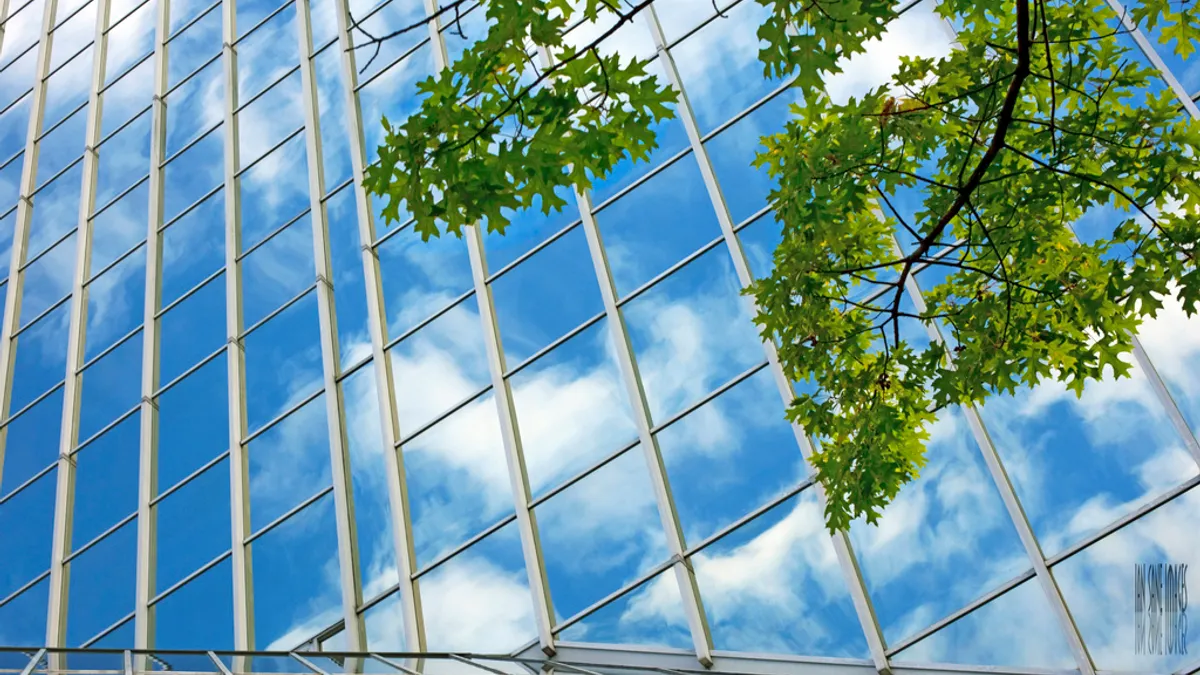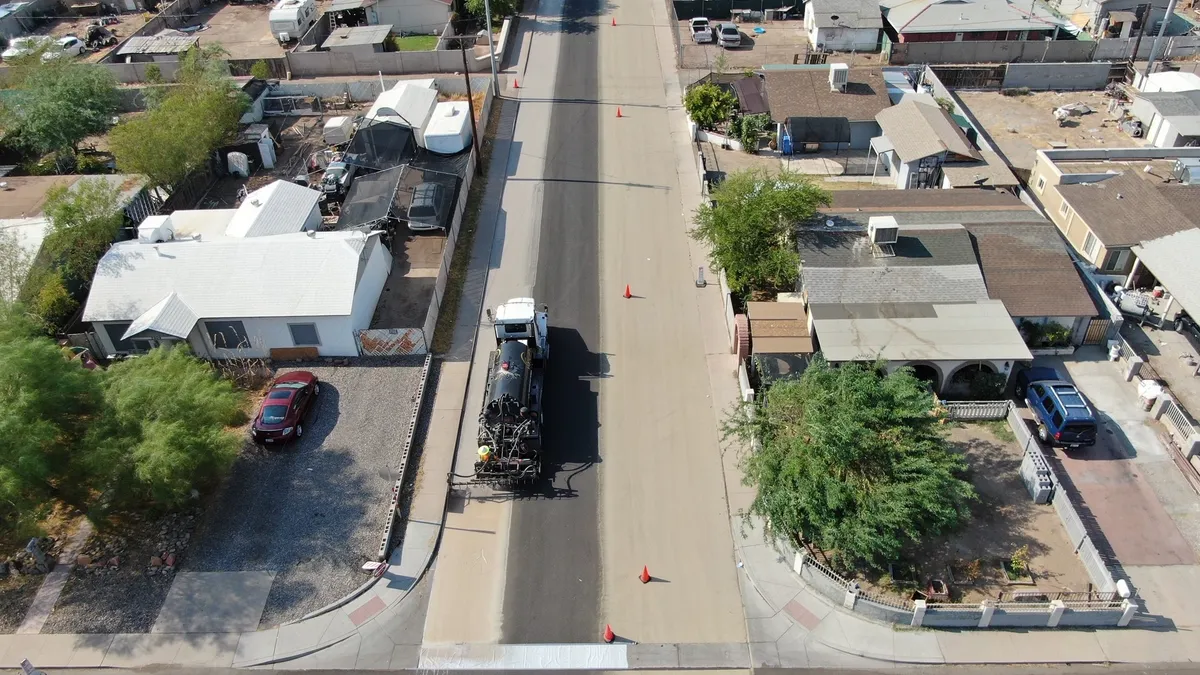With more than 2 million square feet of new space certified every day and more than 92,000 certified projects, the U.S. Green Building Council's LEED program is the front-runner when it comes to green certifications. The Environmental Protection Agency's Energy Star program, which has issued nearly 33,000 buildings certificates and helped benchmark approximately 40% of U.S. office space, is the other prominent certification choice among both commercial and residential contractors.
"Green building rates have continued to rise," said Keara Fanning, central region sustainability practice lead at Jones Lang LaSalle. "This goes hand in hand with [the] increased [corporate social responsibility] and sustainable investing we are seeing. Certification has become expected for class-A space."
Besides LEED and Energy Star, there are other programs that building owners and contractors are exploring based on market demand for sustainability and wellness features. Here is an overview of several unique benchmarks for building in a way that is healthy for both occupants and the environment.
BREEAM USA
Founded in the United Kingdom, BREEAM (Building Research Establishment Environmental Assessment Method) has certified more than 562,000 existing buildings worldwide. It made its American debut in 2016 and, in March 2017, certified its first structure, the renovated 1.3 million-square-foot The Oaks shopping mall in Thousand Oaks, California, under the BREEAM USA In-Use standard.
The certification program includes an online self-assessment and benchmarking tool and a third-party assessment similar to the Energy Star program. BREAM USA is targeting an estimated 5.6 million existing U.S. commercial buildings with its In-Use program but also certifies other categories such as new construction of homes and commercial buildings, infrastructure, renovations, tenant build-out and community master planning.
The BREAMM standard evaluates:
- Specification and design of the building's energy efficiencies.
- The health and well-being of those inside the building.
- Exemplary performance and innovation.
- Sustainable land and material use.
- Prevention and control of pollution and surface water runoff.
- Promotion of sustainable and alternative transportation options.
- Management and re-use of waste through the building's lifecycle.
- Reduction of potable water use and elimination of water leaks.
Green Globes
Green Building Initiative introduced the Green Globes program in 2000 after adapting the 1996 BREEAM Canada standard to the U.S. commercial buildings market. Like BREEAM USA, Green Globes begins with an online self-assessment process. Properties are scored on factors related to project management, site elements, energy performance, water use, waste disposal and recycling, materials, emissions and the indoor environment, and the results are assessed by a third party.
Green Globes has certified more than 1,300 buildings thus far, and GBI says it provides customized guidance in the design, construction and operation of high-performance interiors and buildings.
In addition to demonstrating a commitment to sustainability, a Green Globes certification, according to GBI, also has the potential to:
- Reduce a building's operating costs.
- Increase its eligibility for tax incentives and utility rebates.
- Make the building more attractive to existing and potential tenants.
- Increase the building's marketability.
WELL
The International Well Buildings Institute's WELL standard is different from other major green certification programs in that its primary focus is on the well-being of building occupants, by promoting features such as floor plans that promote exercise, healthy food options on premises, high air quality and circadian lighting.
"WELL certification has been gaining momentum as health and wellness are increasingly important to occupants and employees," Fanning said. "Wellness attributes are viewed as an amenity and are successful in attracting and retaining talent."
WELL has been forming alliances with other certification programs like LEED and BREEAM and organizations including the American Institute of Architects in an effort to make it easier for building owners to certify under more than one program and to better incorporate sustainability into building design. There are more than 1,000 global WELL-certified or registered projects, with more than 320 in the U.S.
Living Building Challenge
The International Living Future Institute's Living Building Challenge is probably the most ambitious of the green building certifications. One major difference between the Living Building Challenge and other certifications is that it is based on actual performance, so completed projects are monitored for 12 months for compliance before certification is granted.
Its standards are divided into seven performance areas called "petals" — place, water, energy, health and happiness, materials, equity, and beauty. Each petal is further broken down into more detailed imperatives, which can change depending on the type of project — renovation, building construction or landscape/infrastructure.
The goal of the challenge is for structures to have as little impact on the natural world as possible through the use of elements like car-free design, net-zero water use and energy systems, biophilic design elements and sustainable materials. Because Living Building standards are so stringent, it's not surprising that, as of May 2017, there were only 73 certified projects.
Zero Energy Building
The International Living Future Institute also administers the Zero Energy Building certification, which is one of the petals of the Living Building Challenge.
The concept behind the net-zero certification is straightforward. To achieve net-zero status, 100% of a building's energy requirements on a net annual basis must be met by on-site renewable energy sources like solar or wind energy, although there are some program exceptions like offsetting through off-site renewables.
And like the Living Building Challenge, Zero Energy candidates must demonstrate performance prior to earning certification. As of May 2017, the institute had certified 33 Zero Energy projects.
Parksmart
The Green Business Certification Parksmart program claims to be the only program that certifies parking structures. As of March 2018, Parksmart had certified 95 U.S. projects representing almost 132,000 parking spaces in 22 states.
The Parksmart program awards points to new and existing parking structures that it says are forward-thinking and sustainable in three categories: management, programs and technology structure design. It employs 48 measures across the categories of innovation, management, programs and technology/structure design, which include parking pricing, access to mass transit, stormwater management, energy-efficient lighting, traffic flow and inclusion of electric charging stations.



















